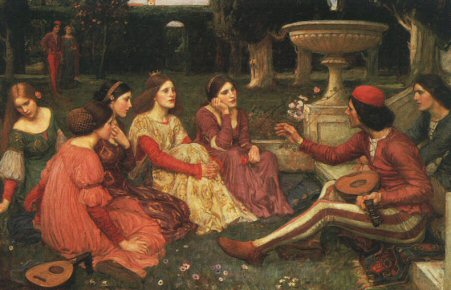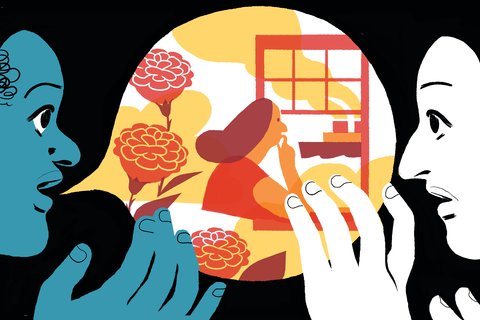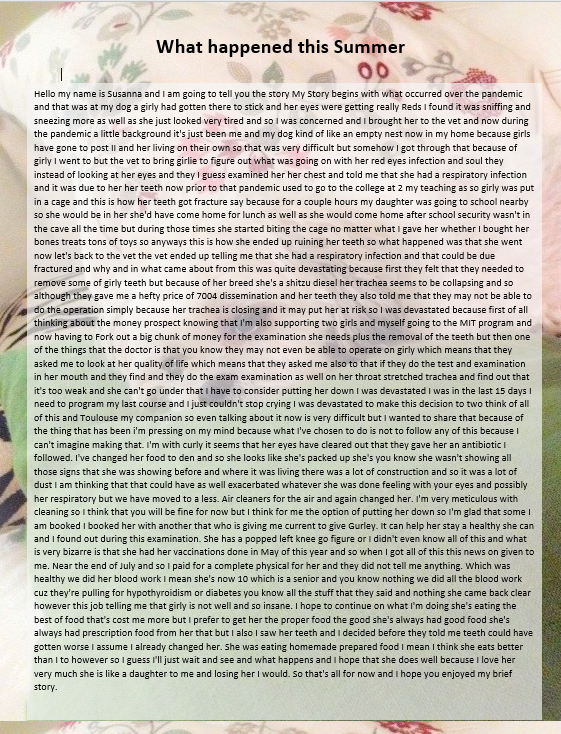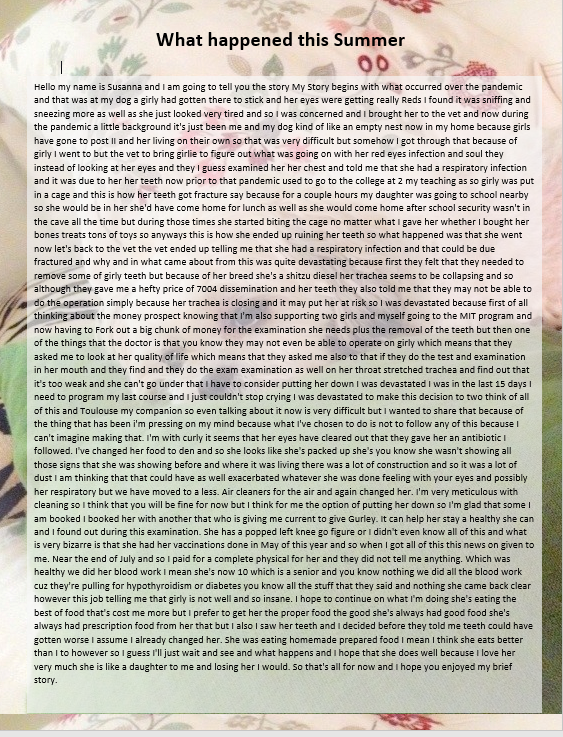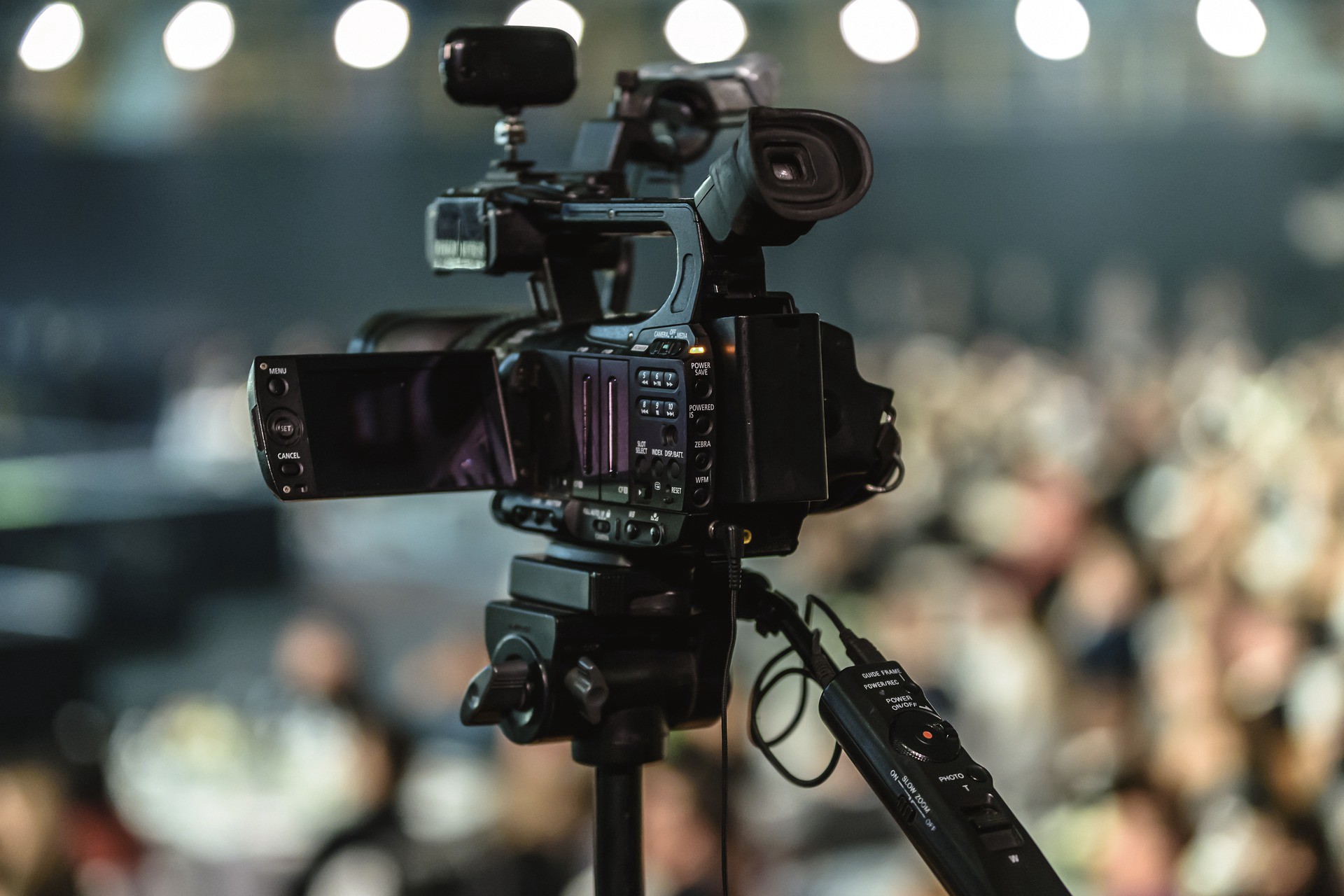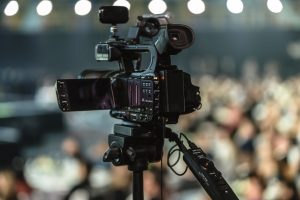Unscripted
For task number three, I told a story about something awful I faced this past summer: my dog Girlie (Shih Tzu), who is ten years old, had an eye infection. I used Speechnotes to dictate what happened and how taking her to the vet to get it checked out led to them asking me to decide whether I should put her down. I do speak into my iPhone to send text messages instead of having to type it all the time. I confess that sometimes I quickly regret sending the text message to my friend as my iPhone dictated the wrong. In saying this, I was prepared mentally for the possible errors that would occur in my unedited story and the limitations I had not being able to edit my orally told story, and here it is below:
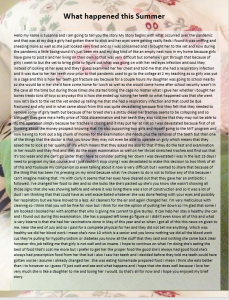
Oral Story Telling Versus Written Story Telling
This exercise of telling my story from memory made me reflect on the differences between oral storytelling and written stories telling. First, I can see numerous places in my orally told story where the wording misrepresents what I was saying. Second, my written story did not capture the non-verbal communication that went along with telling my story. As Socrates states, “writing is a shadow, a derivative of “living and animate speech” (Haas, 2013, p. 6). However, if I had to share this same story as an oral speech to others, it would have had a significant impact. According to Walter(2002), verbal articulation, particularly public verbalization, however lifeless, is a powerful gesture of communication (p. 66). Third, my oral story was spontaneous in that my story was unscripted. However, I know that if I were to recount the story again, it would change because before putting it in writing, my story existed only in my memory and in the memory of anyone who reads my story (Gnanadesikan, 2011, p. 3). Fourth, if I were to verbally tell my story and make a mistake while talking, I could correct it without it being so apparent. As Ong (2002) states, when one can make mistakes, not appearing as mistakes is one thing that separates the expert singers from the bunglers (p. 161).
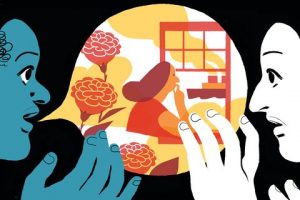 Illustrations by Eleanor Davis
Illustrations by Eleanor Davis
Even though ‘writing is made material by technology’ (Haas, 2013, p.3), my oral story did not allow me to make corrections and second editions. If I were given the option to write my story, it would have allowed me to plan my writing, choose the right words, and include punctuations. The script will allow writers to correct mistakes is valuable because “it is reversible, accommodates novel and flexible approaches (Ong, 2002, p. 75). I recognize I could use a digital voice recorder because of the inventors of writing who lived more than five millennia ago (Haas, 2013, p.3); hence, my written story is more of an artifact like a painting or sculpture. Once a written story is printed and shared, one cannot go back to fix it once it is in the reader’s hands. The history of literacy continues to evolve from drawing to written text; the changes in writing that technologies facilitate will not be simple, easy to predict, rapid, or unitary (Haas, 2013, p.xiv).
Lastly, when reflecting on my story about my dog, whom I referred to as my daughter. I feel that it is culturally acceptable to say this even though others may not consider their pets n this way. So, when I was thinking about my choice of words as I conveyed my story, I thought about my audience. As Ong states (2002), “skilled oral narrators deliberately vary their traditional narratives because part of their skill is their ability to adjust to new audiences and new situations or simply to be coquettish” (p. 48). What if I were to share my story with someone not from North American? How might they perceive my reference to my dog as my daughter? Their oral cultures may be radically different from Western culture (Ong, 2002, p.9). How might they retell my story?
References
Gnanadesikan, A. E. (2011). “The First IT Revolution.” In The writing revolution: Cuneiform to the internet (Vol. 25). John Wiley & Sons (pp. 1-10).
Haas, C. (2013). “The Technology Question.” In Writing technology: Studies on the materiality of literacy. Routledge. (pp. 3-23).
Chapter 1 of Ong, Walter, J. Taylor & Francis eBooks – CRKN, & CRKN MiL Collection. (2002). Orality and literacy: The technologizing of the word. New York; London: Routledge.
Chapter 3 of Ong, Walter, J. Taylor & Francis eBooks – CRKN, & CRKN MiL Collection. (2002). Orality and literacy: The technologizing of the word. New York; London: Routledge.
Images
Storyhunter. (2018, April 11). The Pros & Cons of scripted vs unscripted video. Medium. Retrieved September 27, 2021, from https://blog.storyhunter.com/the-pros-cons-of-scripted-vs-unscripted-video-7d999981f13f.
The New York Times. (n.d.). How to tell A story. The New York Times. Retrieved September 27, 2021, from https://www.nytimes.com/guides/smarterliving/how-to-tell-a-good-story.
